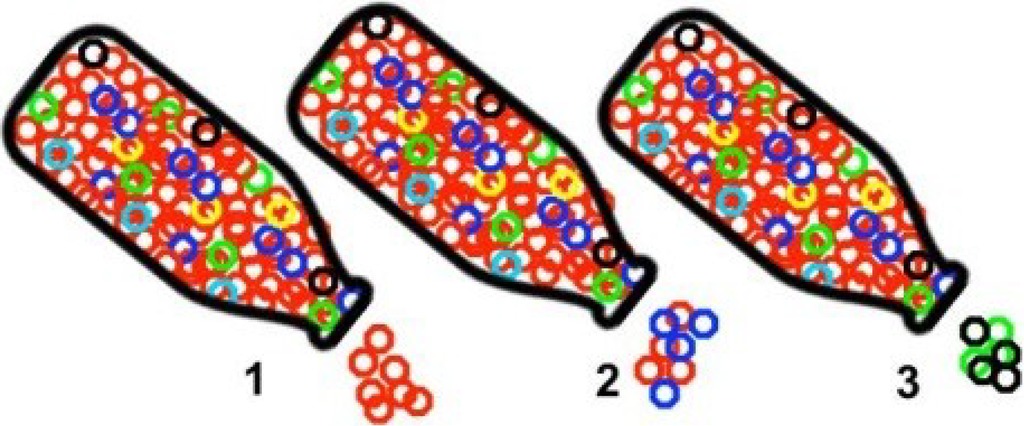In the original manuscript, Forrester, N.L.; Coffey, L.L.; Weaver, S.C. Arboviral Bottlenecks and Challenges to Maintaining Diversity and Fitness during Mosquito Transmission. Viruses 2014, 6, 3991–4004, Figure 1 contains an error, the third bottle was absent from the figure:
The correct figure should be:

Figure 1.
Effects of a bottleneck on virus populations, where virus variants are shown as colored circles: (1) Only the largest subpopulation is maintained after the bottleneck and viral variation decreases; (2) Virus variability decreases but a small amount of viral diversity is retained; and (3) Virus population diversity changes significantly due to random selection of small subpopulations and the dominant sequence is not perpetuated.
References and Notes
- Forrester, N.L.; Coffey, L.L.; Weaver, S.C. Arboviral Bottlenecks and Challenges to Maintaining Diversity and Fitness during Mosquito Transmission. Viruses 2014, 6, 3991–4004. [Google Scholar]
© 2014 by the authors; licensee MDPI, Basel, Switzerland. This article is an open access article distributed under the terms and conditions of the Creative Commons Attribution license (http://creativecommons.org/licenses/by/4.0/).